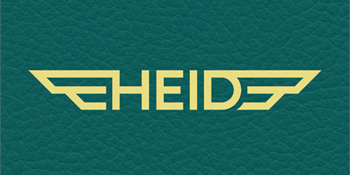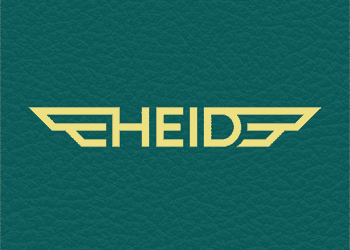1. Introduction to Mythical Creatures and Territorial Behavior
Mythical creatures have long held a significant place in human culture, serving as symbols of protection, danger, and mystery. Creatures like dragons, phoenixes, and griffins often embody qualities attributed to safeguarding their domains from intruders. These beings are not only central to stories and legends but also reflect societal values about territory and boundaries.
In myth and legend, territory is frequently marked by the presence of these creatures or their symbols. For example, a dragon guarding a treasure hoard or a phoenix nested within a sacred grove symbolizes a protected space. As societies evolved, the concept of territorial protection extended beyond myth into modern interpretations, adapting ancient symbols and ideas into contemporary practices.
Contents
- Ancient Symbols and Rituals for Territory Defense
- Modern Interpretations of Mythical Creatures Guarding Territories
- The Role of Environment and Atmosphere in Protecting Territories
- Case Study: Phoenix Graveyard 2 as a Modern Mythical Guardian
- Non-Obvious Methods of Territory Protection in Myth and Modernity
- The Interplay Between Material and Symbolic Defenses
- Future Trends: Evolving Mythical Creatures and Territorial Defense
- Conclusion: The Enduring Power of Myth in Protecting Our Spaces
2. Ancient Symbols and Rituals for Territory Defense
a. Use of Protective Stones like Turquoise in Historical Contexts
In many ancient cultures, stones such as turquoise were believed to possess protective qualities. For example, Native American tribes used turquoise amulets to ward off evil spirits and safeguard sacred lands. These stones served as tangible symbols of protection, often placed at entry points or around important sites, reinforcing the idea that physical objects could serve as spiritual shields.
b. Spiritual Significance of Feathers as Symbols of Protection and Identity
Feathers have historically been symbols of spiritual power and protection across various societies. In ancient Egypt, feathers represented Ma’at, embodying truth and order. Indigenous American tribes used feathers in rituals to invoke divine protection, often decorating boundaries or sacred spaces to signify identity and ward off negative energies. Feathers thus function as both cultural identifiers and protective talismans.
c. Rituals and Symbols in Mythologies That Signify Territorial Boundaries
Mythologies frequently depict rituals and symbols marking territorial borders. For example, in Norse mythology, runes carved at territorial boundaries served as magical protections. Similarly, Chinese feng shui incorporates specific symbols and ritual practices to establish harmonious and protected spaces. These practices underscore the importance of symbolic acts in asserting and defending territorial integrity.
3. Modern Interpretations of Mythical Creatures Guarding Territories
a. How Mythological Ideas Influence Contemporary Security and Protective Practices
Today, the symbolism of mythical creatures influences security measures beyond folklore. For instance, the griffin, symbolizing vigilance and strength, appears in logos and emblems of security firms. Such symbols evoke a sense of protection rooted in ancient myth, often used in branding to convey trustworthiness and resilience.
b. The Role of Symbolism in Modern Security Systems (e.g., Protective Charms, Insignia)
Many modern security systems incorporate symbolic objects like charms, badges, or insignia that draw from mythological imagery. For example, some military units use heraldic symbols of mythical beasts to foster esprit de corps and psychological deterrence. These symbols serve as modern “talismanic” objects that reinforce the boundary between safe and unsafe zones.
c. Artistic Representations of Mythical Creatures as Guardians
Public art and architecture frequently depict mythical guardians, such as stone lions or dragon sculptures at temple entrances, symbolizing protection. These representations blend aesthetic appeal with the function of warding off evil or intruders, illustrating how myth continues to inspire protective symbolism.
4. The Role of Environment and Atmosphere in Protecting Territories
a. Use of Fog and Mist in Art and Storytelling to Create Mystery and Danger
In storytelling, fog and mist serve as natural barriers that obscure visibility and create an aura of mystery. For example, Japanese folklore often features yokai lurking in foggy forests, representing the unknown and danger. This atmospheric element heightens the perception of a protected or forbidden zone, deterring unwelcome intrusion.
b. Environmental Elements as Natural Defenses (e.g., Fog in Forests, Mountain Ranges)
Natural landscapes like mountain ranges and dense forests act as physical barriers that protect territories. Historically, fortresses were built on elevated terrain to leverage natural defenses, making invasions difficult. Modern environmental management continues to utilize these natural features as part of territorial security strategies.
c. How Modern Media Employs Atmospheric Effects to Reinforce Territorial Boundaries
Videogames and movies often use atmospheric effects such as fog, dim lighting, or mist to signify boundaries and evoke danger. These visual cues influence player and viewer perception, reinforcing the idea that certain areas are protected or hazardous—mirroring ancient symbolism in a digital age.
5. Case Study: «Phoenix Graveyard 2» as a Modern Mythical Guardian
a. Overview of the Game’s Setting and Themes Related to Territorial Protection
«Phoenix Graveyard 2» exemplifies how contemporary media adopts mythic symbols to depict territorial guardianship. Set in a mysterious landscape, the game features environments where players defend sacred sites against invaders, emphasizing themes of rebirth, resilience, and protection—core attributes of the phoenix myth.
b. How the Phoenix Symbolizes Rebirth and Protection Within the Game
The phoenix, with its cycle of death and rebirth, symbolizes renewal and eternal guardianship. In the game, this creature appears as a guardian spirit, rekindling defenses after breaches and inspiring resilience. Its fiery imagery reinforces the concept of continuous protection and renewal of territory.
c. Specific Gameplay Elements That Depict Territorial Defense (e.g., Visual Effects, Symbolism)
Visual effects such as fiery auras and rising flames accompany the phoenix, creating a striking symbol of protection. The game’s interface incorporates phoenix imagery into shields and barriers, illustrating how mythic symbolism is integrated into gameplay mechanics to reinforce territorial defense.
For a deeper dive into how myth and modern digital environments intersect in territorial protection, explore the game bruv phoenixgraveyard2:loss? innit?.
6. Non-Obvious Methods of Territory Protection in Myth and Modernity
a. Psychological Barriers—Fear, Respect, and Legend-Based Deterrents
Legends and stories about mythical guardians cultivate respect and fear, which serve as deterrents. For example, local myths about a dragon guarding a village can prevent trespassing, relying on the psychological impact of legend rather than physical barriers alone.
b. Cultural Myths That Serve as Social Contracts for Territorial Boundaries
Myths often function as social agreements, reinforcing boundaries through shared stories. In some societies, the myth of a sacred beast or spirit ensures community respect for territorial limits, integrating cultural identity with protection mechanisms.
c. The Influence of Modern Technology—Digital “Mythical Guardians” and Virtual Territories
Digital environments have adopted mythic themes, creating virtual guardians such as AI-powered bots inspired by mythical creatures. These digital protectors serve as modern equivalents of ancient symbols, defending virtual territories against cyber threats.
7. The Interplay Between Material and Symbolic Defenses
a. Physical Objects (Fences, Stones, Artifacts) as Barriers
Material defenses like fences, walls, and artifacts physically delineate territory. For example, ancient stone walls marked boundaries and prevented intrusion, embodying tangible protection.
b. Symbolic Objects (Feathers, Stones, Fog Effects) as Psychological Deterrents
Symbolic objects evoke psychological deterrence. Feathers, for example, can symbolize spiritual oversight, while fog effects in media create an aura of mystery, discouraging unwelcome entry.
c. Examples of Integrated Defenses in Myth and Modern Practices
An effective strategy combines physical barriers with symbolic elements. A fortress with statues of mythical creatures at its gates, complemented by fog machines during ceremonies, exemplifies this integration, blending material and symbolic defenses to enhance protection.
8. Future Trends: Evolving Mythical Creatures and Territorial Defense
a. Digital and Augmented Reality as New “Territorial Guardians”
Emerging technologies like augmented reality (AR) enable virtual guardians to be projected onto physical spaces, creating interactive borders that respond to intrusions. These digital “mythical creatures” can patrol virtual boundaries, blending mythic symbolism with cutting-edge tech.
b. The Potential of AI and Virtual Guardians Inspired by Mythical Creatures
Artificial intelligence can develop virtual guardians that learn and adapt, embodying traits of mythical protectors like the phoenix or dragon. These AI systems can monitor environments, trigger alarms, or even engage in safeguarding activities, representing a fusion of myth and machine.
c. Ethical Considerations and Cultural Preservation in Modern Territorial Protection
As technology advances, ethical questions arise regarding cultural symbols and their use. Respecting cultural origins of mythological symbols is vital, ensuring modern adaptations do not distort or diminish their significance. Preservation efforts often involve collaboration with cultural custodians to maintain the integrity of these symbols.
9. Conclusion: The Enduring Power of Myth in Protecting Our Spaces
“Mythical creatures and symbols are more than stories—they are enduring tools for psychological and cultural protection, continually evolving with technology to safeguard our spaces.”
Throughout history, the combination of material objects and symbolic representations has proven effective in defining and defending territories. From ancient ritual objects to modern digital guardians, the core principles remain rooted in the timeless human tendency to embed meaning and myth into our boundaries. As we progress into a future where virtual and augmented realities become commonplace, the mythic power of creatures like the phoenix continues to inspire innovative approaches to territorial protection.
Understanding these evolving methods underscores the importance of cultural symbols. They serve not only as protection but also as a connection to our collective history and identity. For those interested in how myth influences modern digital defense, exploring innovative platforms such as bruv phoenixgraveyard2:loss? innit? offers a glimpse into contemporary interpretations of this ancient principle.

